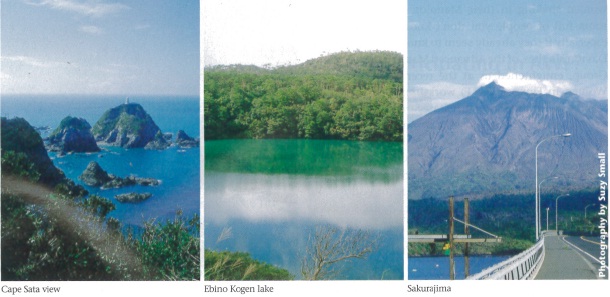Often overlooked, Kyushu is a perfect holiday destination
by Suzy Small
Tucked away in Japan’s south-western corner, Kyushu is often neglected by travelers, who choose to pass it by in favor of more famous, less out-of-the-way destinations. Kyushu definitely deserves a place on your ‘to do’ list though — with a mixture of stunning scenery, interesting cities, and excellent food — there is enough variety to keep everyone happy.
Although the island looks small on the map, Kyushu is actually 35,640 km2, so it takes some time to get around. You can fly to Fukuoka from Haneda, or catch the Sanyo Shinkansen, but for touring, the best option is to hire a car, allowing you to explore more remote areas and make the most of your time. Public transport is possible, but often services are limited which means it takes longer than it should to get around.
Your itinerary for the island can vary, depending on your interests and time, but no matter what kind of holiday you’re craving, Kyushu has something to offer.
For History Buffs
The best destination for anyone interested in history is Nagasaki. The city is known not just for its atomic legacy, but also for its long history as a gateway between Japan and other countries, as for many years it was the only port open to foreigners. You can easily spend a few hours in the tranquil Peace Park and well-designed Atomic Bomb Museum, but afterwards it’s less depressing to spend time wandering in the backstreets of Glover Garden where old European-style houses have been preserved, or wander through Chinatown. It’s also interesting to visit Dejima, an artificial island where foreigners were contained during Japan’s isolation period.
Despite the destruction caused by the atomic bomb, a surprising amount of the city near the port was undamaged, and so it retains a great deal of character. The local tourist authority has a good English website, with information on possible sightseeing itineraries www.ngs-kenkanren.com/eng.
For Nature Lovers
The mountainous, inland region of the island has two spectacular national parks: Kirishima-Yaku and Aso-Kuju. Both are dominated by volcanic landscape, with dramatic peaks and crater lakes. In warmer months camping is easy, and over winter there is still plenty of hiking for those who want to breathe fresh air and enjoy the rugged scenery.
Far in the south of Kyushu, Sakurajima is a glowering volcano that overlooks the city of Kagoshima. A short ferry ride takes you onto the island, where a hardy population of around 5,000 live despite frequent showers of volcanic ash. Children wear yellow helmets to school, lava shelters punctuate the landscape and enormous daikon radishes are grown in the rich black soil, but the island has a surprisingly relaxed atmosphere, making it an enjoyable place to stop by.
Even further south is Cape Sata, an incredibly remote outcrop marking the southernmost part of the island. Driving through twisting roads and tunnels to reach the Cape, the landscape becomes more and more tropical, with beautiful beaches, lush vegetation, and turquoise water. It feels more like Okinawa than mainland Japan, and is thankfully off the tourist track.
For the Stressed
Being a highly volcanic area, Kyushu is dotted with dozens of onsen towns, encompassing the whole spectrum from tasteful to tacky. For pure kitsch, head to Beppu which is the Las Vegas of onsen towns; lots of neon lights, love hotels, and pachinko parlors. Hordes of tourists roam the streets in yukata, looking for their next hot spring fix. Although not exactly relaxing, it is great fun once you get over the initial gaudiness and, with over 100 million liters of water pumped into the town each day, the choice of baths is unbeatable.
For something quieter, Kurokawa Onsen near Mt. Aso is a charming option; a cluster of ryokan nestled in a tree-lined valley, all with hot springs. The ryokan here are much more reasonable than in places like Kyoto, so it could be a good opportunity to treat yourself to this quintessential Japanese experience. After soaking in beautifully designed baths, eating kaiseki ryori in your room, and sinking into a soft futon, you’ll never have felt so relaxed. The local tourist information office (0967-44-0076) can provide information on the ryokan and local rotemburo (outdoor Onsen).
For Gourmets
The proximity to mainland Asia has influenced Kyushu’s food, giving it slightly more ‘kick’ than in the rest of Japan. In Fukuoka the local ramen is rich with garlic, and can be enjoyed at the many yatai stands that spring up in the evening around big intersections. Nagasaki’s delicacies are shippoku and chanpon, both of which have a Chinese influence. The Nagasaki Castella cake is also famous, having been made in the town since being introduced by Portuguese missionaries in the 16th century. Every town in Kyushu has some kind of local specialty, and it’s well worth taking the time to seek them out.









